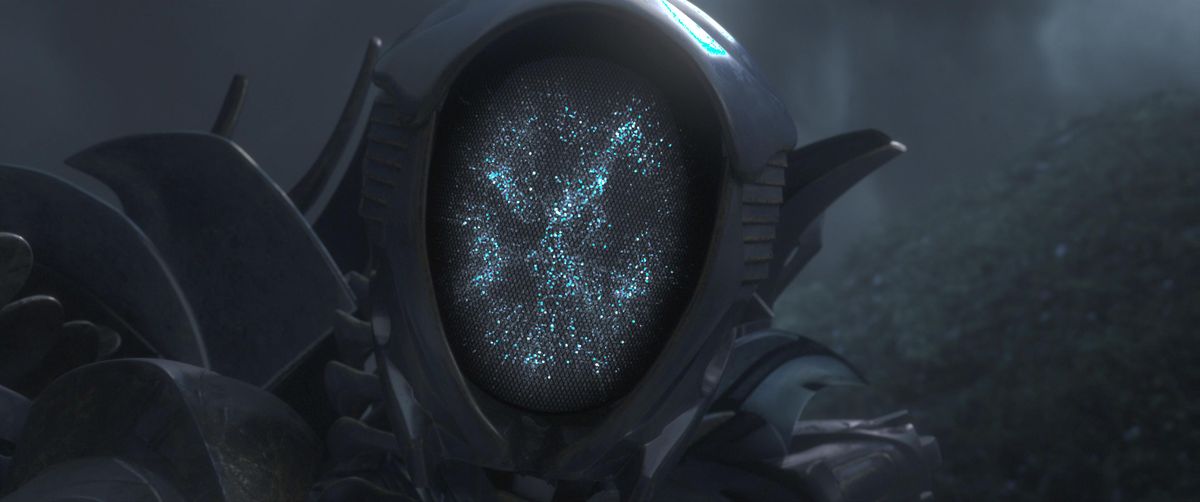Summary
In a continuation of FutureWorks’ well-established working relationship with Netflix, the company completed more than 1,000 shots for sci-fi drama 'Lost in Space.'
In a continuation of FutureWorks’ well-established working relationship with Netflix, the company completed more than 1,000 shots for sci-fi drama 'Lost in Space.'
| Project: | Lost in Space |
| Client: | Netflix |
| Service: | VFX |
A 50-person team working across two FutureWorks locations delivered essential VFX for the distinctive alien android, one of the most recognizable elements of the show.

In a continuation of our well-established working relationship with Netflix, we completed more than 1,000 shots for sci-fi drama Lost in Space. Delivering VFX across all three seasons of the show, we also took on additional work for the third and final series.
A reboot of the popular ‘60s show, Lost in Space made its debut on Netflix in 2018, and FutureWorks has been involved right from the start. The series follows the Robinsons, a family of space colonists who get derailed on their mission to set up home on a distant planet. Set in 2046, their intergalactic adventure unsurprisingly features a more modern look than the original show, including a totally revamped robot with a more humanoid form.
The nameless robot is one of the most recognizable elements of the show. While a full CGI robot was used for some scenes, most sequences were accomplished using an elaborate suit worn by 6ft 7in actor Brian Steele, who is well known for his suited creature work. FutureWorks made a significant contribution to all of the scenes where the robot was portrayed by Steele.
“We made the robot look more robotic,” says VFX Supervisor Gouri Shankar. “After digitally hollowing out the abdomen area, we filled it with lots of mechanical actuators, cables, and springs to make it look less human.”

We built a strong rapport with the Lost in Space VFX crew, including VFX supervisor Jabbar Raisani and Visual Effects Coordinator Jared Higgins, having already collaborated with them on the Starz series Black Sails. “Working on season one was more of a challenge for us as we had to figure out the vision, but by seasons two and three, the process was quicker as we were more familiar with the expectations of the directorial team,” says Gouri.
As a result of the growing trust between the teams, we were asked to increase its scope of work for the third Lost in Space series, with the addition of face graphics for the robot in every alternate episode.
"FutureWorks completed an immense body of work for us over our three-season collaboration on Lost in Space. By the last series, the team was handling the most difficult paint-out work and a vast amount of CG augmentation on our beloved robot. Be the mission large or small, the team at FutureWorks always exceeded our expectations and was an absolute pleasure to work with on our journey across the galaxy.
"Jabbar Raisani, Visual Effects Producer, Lost in Space
In the show, the robot's face appears as a blank dome with emotions reflected in moving blue lights, which turn red when the robot is acting aggressively. Creating the VFX for the robot's face graphics was particularly challenging. “The face graphics are 2D but when we see them on the show they have to look as though they are a volumetric projection, rather than a static 2D image pasted onto a screen,” says Gouri. “We engaged our DevOps team to create bespoke tools to help us streamline the production process.”

With a timescale of around nine months, we delivered both the robot abdomen and face graphics VFX for the third season, along with additional tasks, such as landscape color changes. Working concurrently in two locations, 30 members of the FutureWorks team dealt with the robot abdomen VFX in the Chennai office, while a further 20 took care of the robot face graphics at FutureWorks' HQ in Mumbai.
When work first began on the robot abdomen in season one, the VFX Supervisor had clearly mapped out what was needed using a 3D model, giving us a solid basis for creating the visual effects. The team used Maya, Nuke, and Photoshop to complete the work, making use of 2.5D projection mapping. “We created a CG pipeline where all of the assets from Maya went straight into Nuke, which reduced the turnaround time and budget for shots by half,” says Gouri. “It's a win-win situation.”
"Seeing all of the seasons in one is incredibly rewarding because it reminds me of the six-year journey we had with the Lost in Space VFX crew. It's an incredible team and I would jump at the chance to work with them again.
"Gouri Shankar, VFX Supervisor
"We're thrilled to have been involved with such an exciting and popular project for Netflix. Working closely with the directorial team on Lost in Space, we were able to help bring the show's famous robot to life.
"Gaurav Gupta, CEO
© 2025 FutureWorks Media Limited